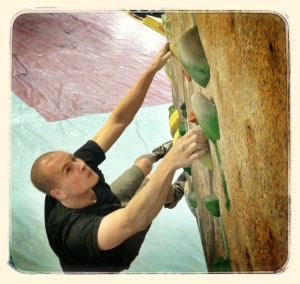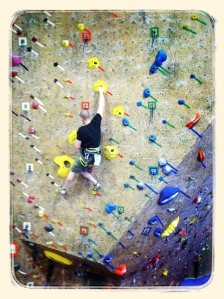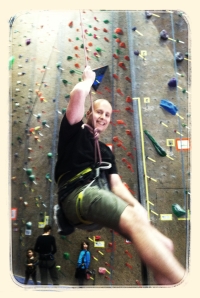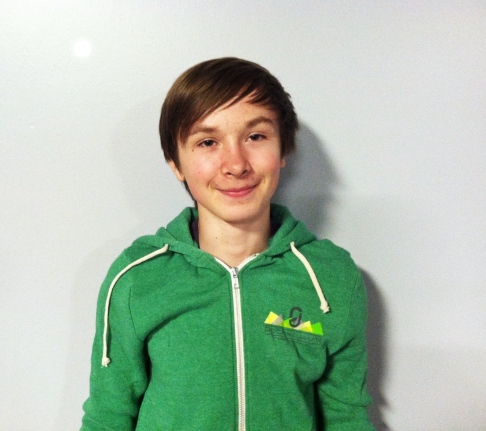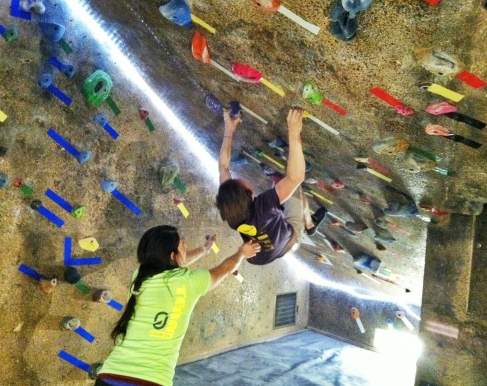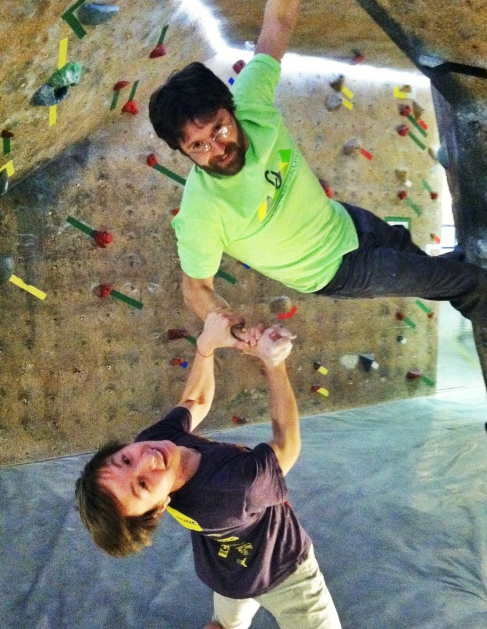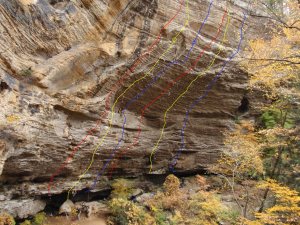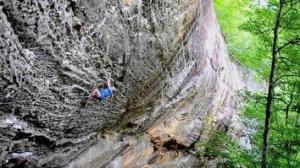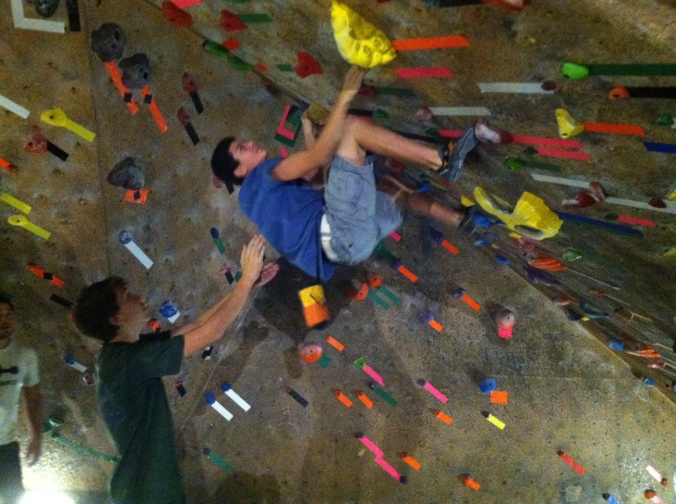NattyGray here. I’m going into my 8th year as a routesetter at RJ, and this is the first time I’ve really sat down to discuss an issue regarding climbing grades.
While I’m not the strongest climber on the RJ setting crew (read: I’m the weakest), and I don’t devote much of my free time to climbing these days, I do feel that over my climbing career I’ve attained a solid grasp on grades.
I frequently put up grades that are way beyond my climbing ability (5.13 and V10). I am able to do this because of the knowledge I’ve acquired through routesetting, and because of the time I spend observing folks who are much stronger than I am. This brings me to my point; when it comes to grades, start by acknowledging your ability.
When I first started climbing I was a newbie. We all were, and some of us currently are. There’s no shame in it at all, and we should never forget where we came from. In my early climbing years I forsook all other activities and did nothing but climb, all the time. I eventually graduated newbie status and grew wiser and stronger – much stronger than I currently am. Today I climb a solid grade lower on ropes, and I boulder a few digits lower on the V-scale. The reality is that I currently spend more of my time in a pair of running shoes than I do in my Evolvs. This affects my climbing fitness. In my current state it’s important that when offering my suggestions/opinions while forerunning new routes, I’m honest about my current situation.
My current situation: I’m clearly a better runner these days than I am a climber.
Being a better runner came at the cost of losing my climbing strength. I’ll admit that sometimes I get confused and think I’m as strong as I used to be; but I’m not. This means that when I suggest a grade based on my success or failure to climb a route or a boulder problem, I need to offer my suggestion based on my current ability – not the ability I had five years ago. Sometimes it’s a harsh reality for me to face, but I’m not the climber I used to be.
Example: This year I revisited a climb that I love and which I will also argue is the best climb for the grade on the Front Range; Ghost Dance.
I conquered this boulder problem in 2006.
This year I took a trip to the Millenium boulder in hopes of repeating this amazing line. I thought that like my friend Asher in the video, I would “float” to the top and do a little dance while looking down from my twenty-foot perch. I conjured up memories of my experience eight years ago. I remembered the beta, and how super cool the move out of the pocket felt. I remembered the “better” edge hidden above the first right handhold (you’re welcome), and I remembered how satisfying it felt to stand on top.
When I arrived at the boulder with my friend, I couldn’t even pull onto the start holds. Like, at all. I re-chalked and re-tried and seriously, I couldn’t get both feet off the ground. It hurt, both physically and mentally. Then I told myself, “Self, you are not even close to as strong as you used to be. You need to stop drinking beer, lose ten pounds, climb more, and revisit this boulder another day.”
The deterioration of my climbing fitness is due to the time I spend running (and probably many other things, including beer). I don’t have the time nor do I want to bore anybody with all of my reasons. The truth is that others may be facing the same reality, only due to different factors. Age, diet, health issues… you name it – I’m sure there are a million reasons. To stay at a high level of climbing requires a lot of work though, and if for whatever reason you stop doing, or something interferes with that hard work, the fitness goes away quickly; very quickly.
So the next time you come off a route or boulder problem (or can’t even start one) – whatever the proposed grade -take an honest assessment not only of the regular “is this my style?” grading assessments, but also of your current ability. And be honest with yourself. It’s okay if you’re not as strong as you used to be – I’m not – and I love climbing more now than ever. I came to terms with this issue recently, and if we’re honest, that route is probably still 5.11.
What are your thoughts on the subject?

